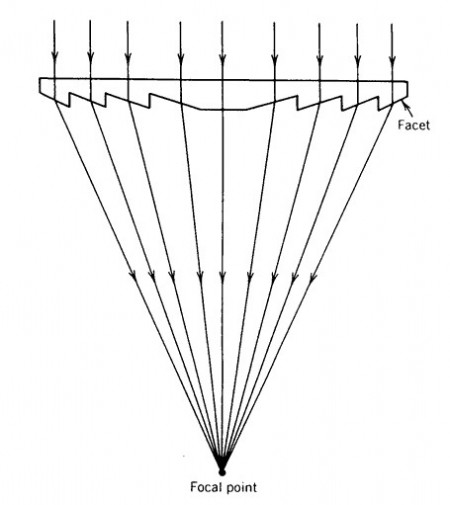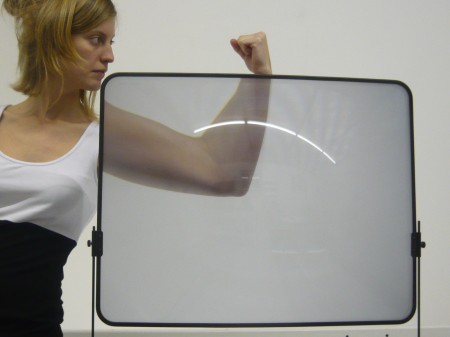Feb
12
Micro Machining to Make Fresnel Lenses For Solar Panels
February 12, 2014 | 2 Comments
Researchers in China suggest micro-machining could be used to create almost flat Fresnel lenses that boost the electrical efficiency of solar panels. Using Fresnel lenses to design solar panels could lead to fewer solar cells in a panel taking in the same area of light. Such designs could be much less expensive.
French engineer and scientist Augustin-Jean Fresnel invented Fresnel lenses in the early nineteenth century. The lenses are essentially two-dimensional equivalents of conventional optical lens, but they have ridges in concentric rings that focus the light to a point behind the lens without the three-dimensional bulk of a conventional lens.
Because the concentric rings can be used to significantly reduce the depth of the lens, compared to a standard convex lens, image quality is reduced when trying to focus. Fresnel lenses miss having some light focused at the gaps between the ridges. This limits the use of Fresnel lenses in photography and other applications where the user does not wish to lose fine detail. For solar panels the total gross transmission and its concentration are the important metrics.
The trade off comes as a detailed image is not needed and the quality compromise is acceptable if the benefits of reduced bulk outweigh the light energy losses. Some readers might recall the early applications of Fresnel lenses were in providing a lower-cost way of focusing the light from a lighthouse beacon. Others might recall Fresnel lenses used in inexpensive focused rear-view mirrors that allow drivers to see a wider-angle view of the rear of their vehicles. Fresnel lenses have also been used in inexpensive handheld magnifiers to assist the visually impaired and for artificially enlarging a display from a television or other device.
Y. Cheng, X.D. Zhang and G.X. Zhang of the State Key Laboratory of Precision Measuring Technology & Instruments, at Tianjin University, in China, have developed a technology that allows them to craft the necessary surface structures of a Fresnel lens, in an array of microscopic cones, rather than concentric ridges, so that incident light is brought to a point at a more precise depth on the photoactive layer in the panel.
Initial tests with their precision-machined Fresnel solar collector showed that they could obtain a peak power four times that possible with a standard panel at low resistance. The difference in power falls off quickly as the solar cell’s resistance rises, which it does as it gets hotter under sunlight and as a byproduct of its generating electricity.
Nevertheless, the differential would be enough to boost a micro-machined Fresnel lenses solar panel’s electrical output substantially. The team reports the improvement is enough for offsetting the additional cost of the Fresnel collector such that the overall cost of solar panels might be reduced. This simple addition to older, less efficient solar panels might also make them viable for places and applications where modern devices of higher intrinsic efficiency are not commercially tenable.
Whether these fine researchers have hit the mother lode for another jump in solar cell efficiency at lower costs will be discovered in manufacturers’ efforts to commercialize the technology.
It’s probably inevitable that some form of concentrator is coming to solar panels. When lens designs can achieve large double-digit reductions in the solar cells used, solar panel prices could plummet compared to today’s investment requirements.
Lets hope the researchers stay on course. Reducing the solar cells in a panel by 75 or 80% would go far in making solar panel energy production competitive.
Comments
2 Comments so far




If someone is looking for solar panels, I used this service to compare free quotes from local solar installers and I was able to save a lot of money on my system. I encourage anyone who is looking to go solar to do the same, it took me 30 seconds and it’s free! Here is the link to their website: http://www.mysolarinstaller.com
Dear sir / Madam
We looking for Fresnel lens magnifier with this specification, check the attach file.
If you have this kind of Fresnel lens we want to know the price and quantity available.
Looking forward to your early replay
Thanks & Best regards
Bassma Ali
Greenco Egypt
Tel: +2- 01006684868
Tel: +2- 01276666767
Email: Basma@greencoegypt
Web: http://www.greencoegypt.com